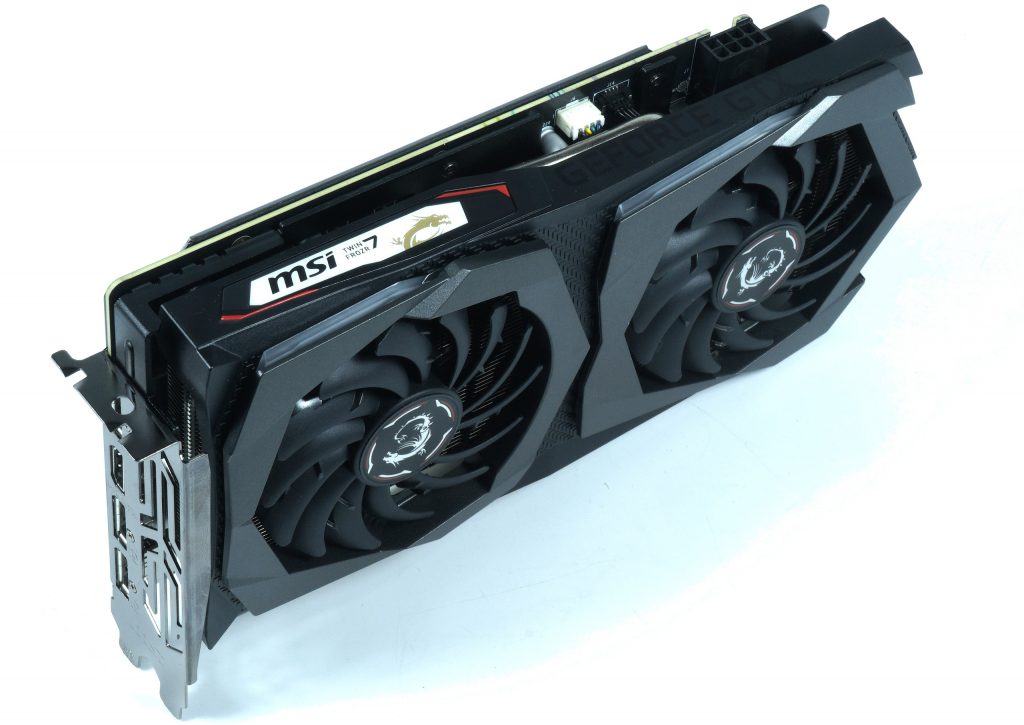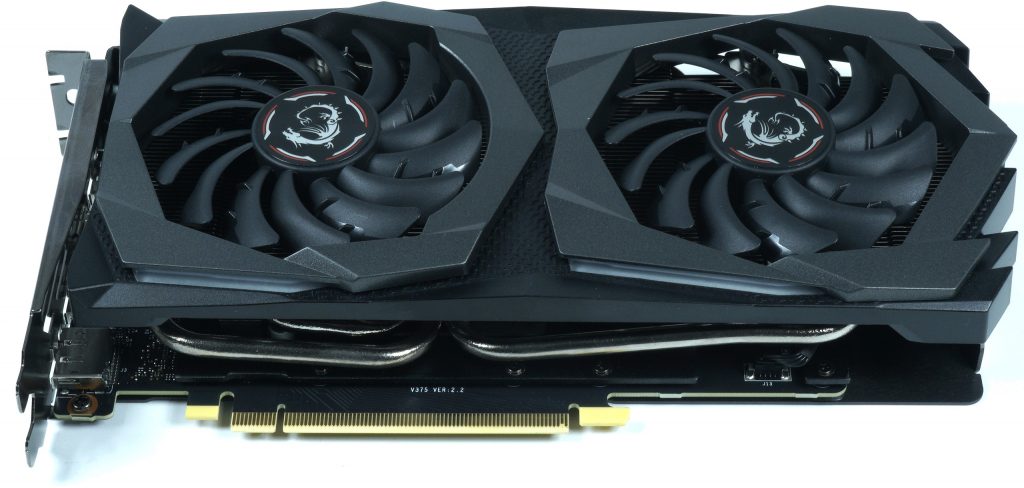The price question is…?
Is the bidding really worth the extra charge compared to the "butter and bread" models? The card is soothingly quiet – almost too quiet, if you think of the admittedly somewhat unpractical stress test. I really had to look several times to see if the fans really started. The hysteresis is well chosen, there is no annoying on-off. The card comes with a higher power limit and enables significantly more boost clock time in the final sequence even without manual overclocking.
All these genes also allow loose clock rates around 2.1 Ghz or above, if you manually overclock even further. The memory is also quite easy to accelerate, but then you should raise the fans at least to 1200 or 1300 rpm. This would certainly be the performance of the simpler Ti entry-level models, which, however, do not really cost much more. But besides an extremely, quiet map, you also get RGB full, after all.
The technical aspect is…?
The TU116-300 on the GeForce GTX 1660 Super is not so wrong. The tensor and RT cores "deprived", the area used is still huge compared to the Pascal cards, but it will probably have been an economic consideration in addition to the architecture-based changes mentioned in the intro, partial designs so as it now seems to be under a good technological control. What has been noticed is a very large variation of results compared directly to the GeForce GTX 1070. Since these differences in our test scenarios cannot be fixed on the memory, some slips down should be rather driver-related.
I would also like to return to the FP16 performance, which has increased enormously compared to Pascal. Another advance over Pascal cards such as a GeForce GTX 1070 and GTX 1060 is the slightly higher power consumption efficiency. Even in the applications, where there was almost a tie between the GeForce GTX 1070 and the GTX 1660 Super, the power consumption of the small Turing card is 10 to 15 watts below. These aren't galaxies yet, but you can see it when you look for the sweet spot, which then looks at approx. 100 to 110 watts. However, you can also crack the GeForce GTX 1060 with left, even without further action.
With RTX Off, Nvidia has already managed to create a small turing for the masses with the other two models, which must now hope that the road will rule and correct, which as an EIA could rather deter. The 6 GB memory is anyway architecturally related, because to attach 8 GB to a 192-bit interface, one would probably have landed at a GTX-970-Revival. Please, don't. But you can also see from the results that the 192-bit interface is a real bottleneck and the Super-Duper-1660 can really get started with more flood on the memory cells.
Conclusion
Within the framework of what is technically still feasible and useful, this card probably sleeps at the upper limit of the GTX-1660 Super-Class. The maximum 140 Watt Power Limit achieves up to 3% more performance at approx. 7% higher power consumption. You can live with that quite well. This card is extremely quiet in direct comparison, just enough cool and at the same time reasonably efficient, which clearly speaks for this model. Only with the price you have to start again, but we already had that with the weighing of the features at the beginning.
The up to 1950 MHz boost clock (on average rather 1935 MHz) of the heated card in the closed housing are really good and the achieved 2.1 GHz+ when overclocking as well. In the test, the card does exactly what you could and can expect from it. So MSI has done a lot of things right and little wrong. So you can buy the model with peace of mind, because it will be a really quiet story. Of course, this can please and in the end makes you overlook a few small things.

































Kommentieren